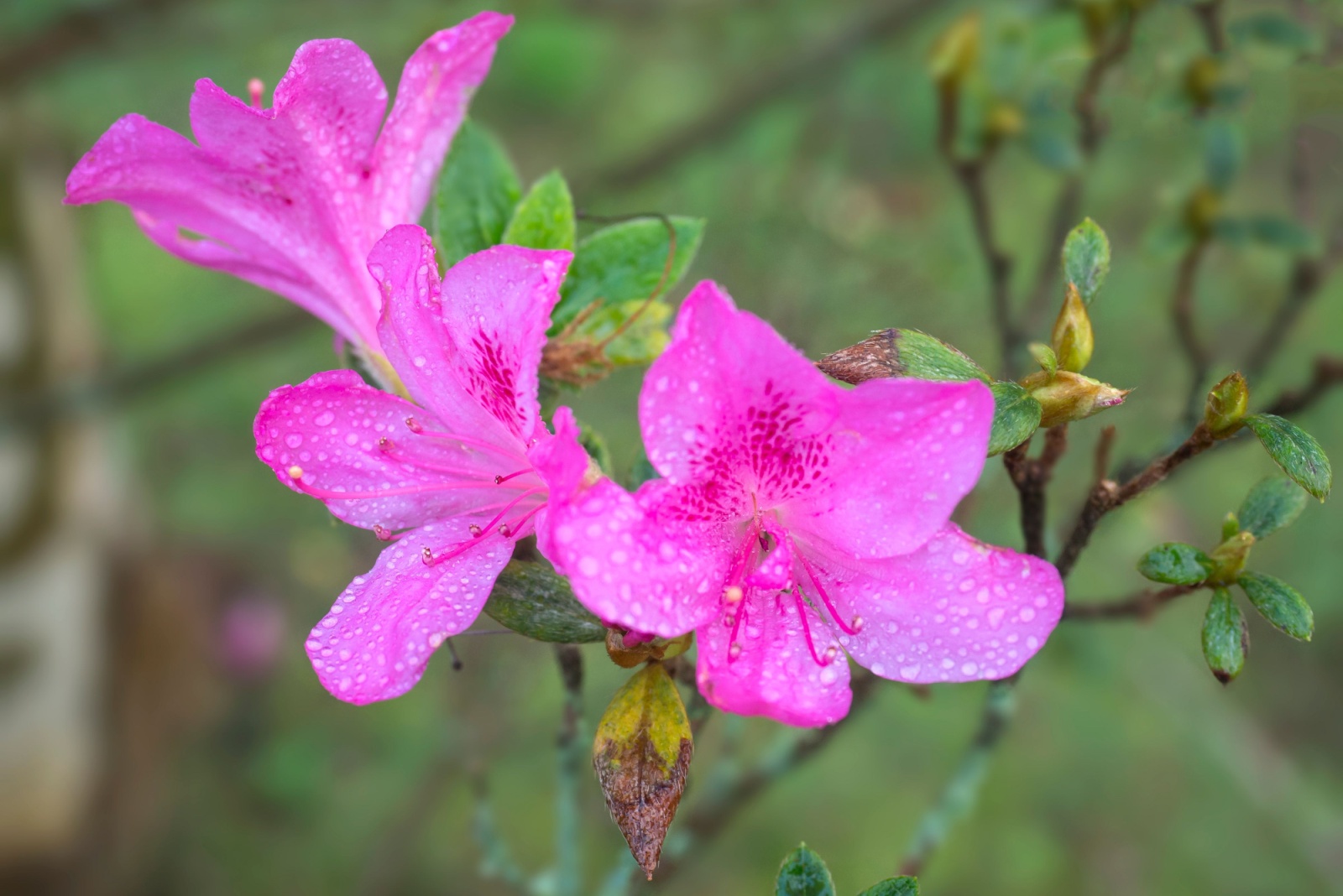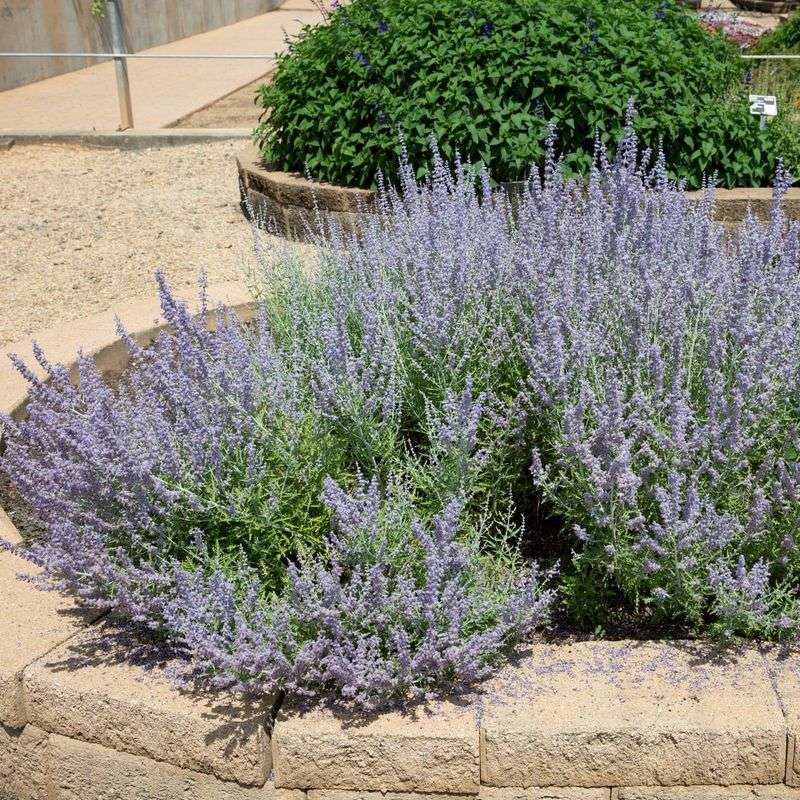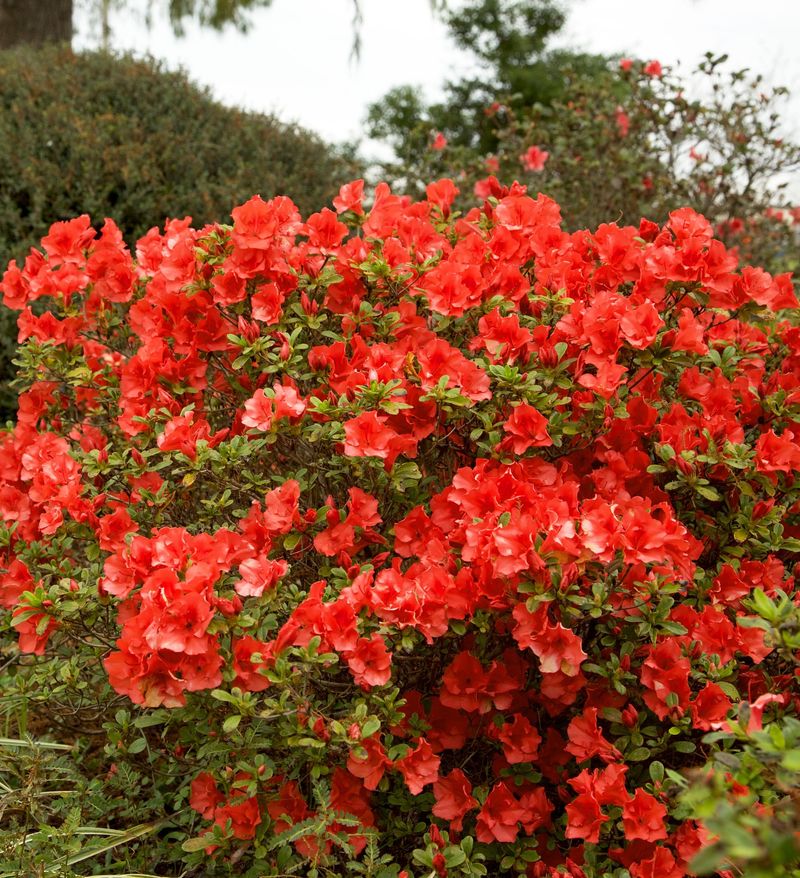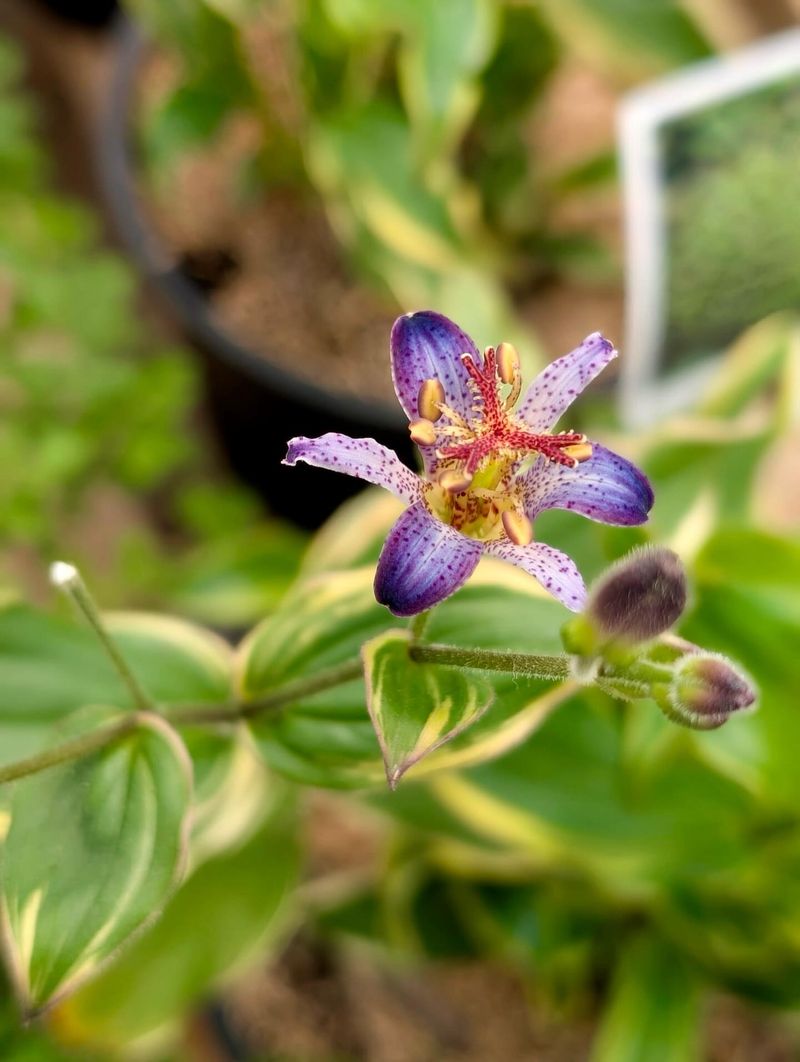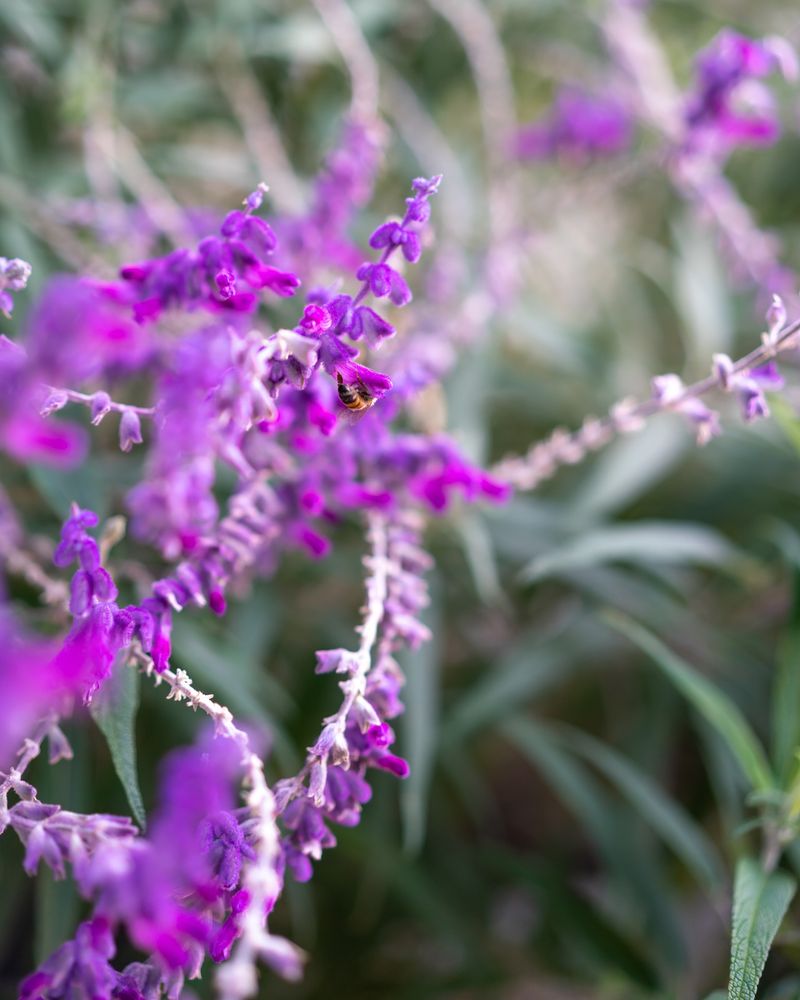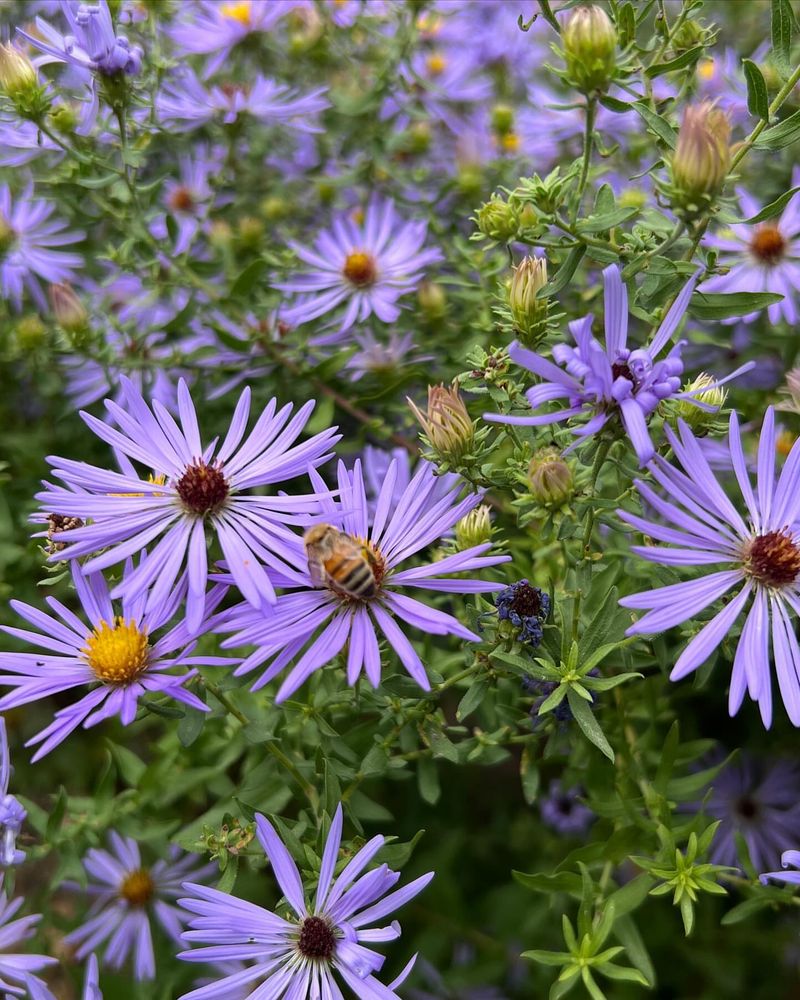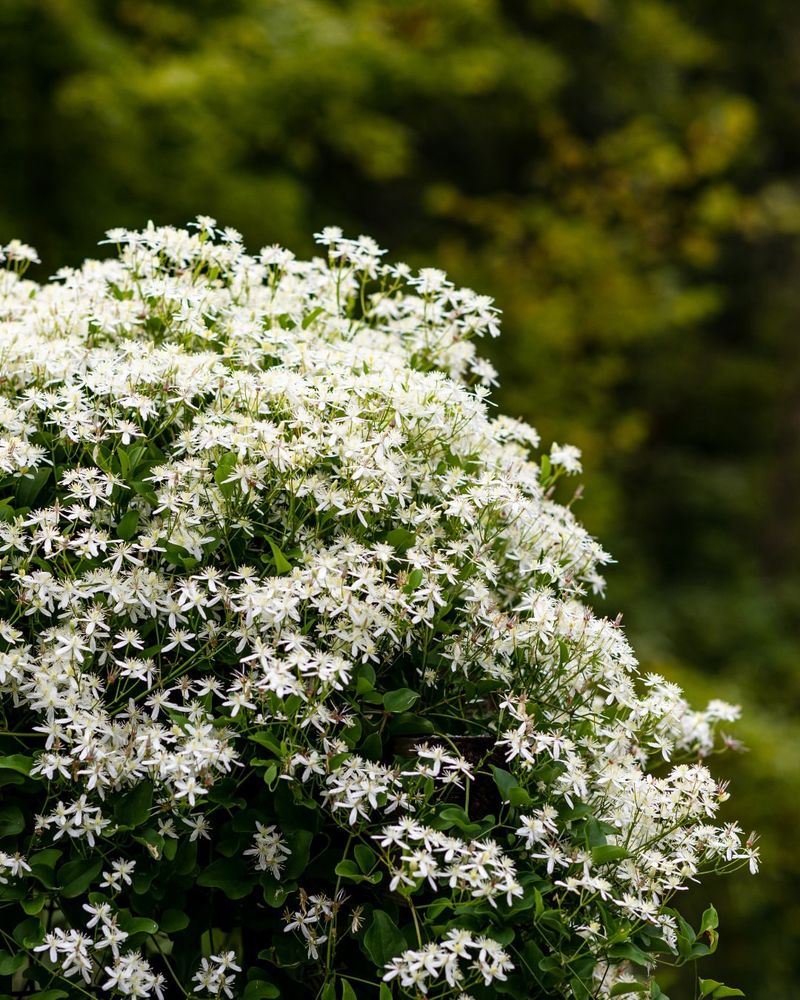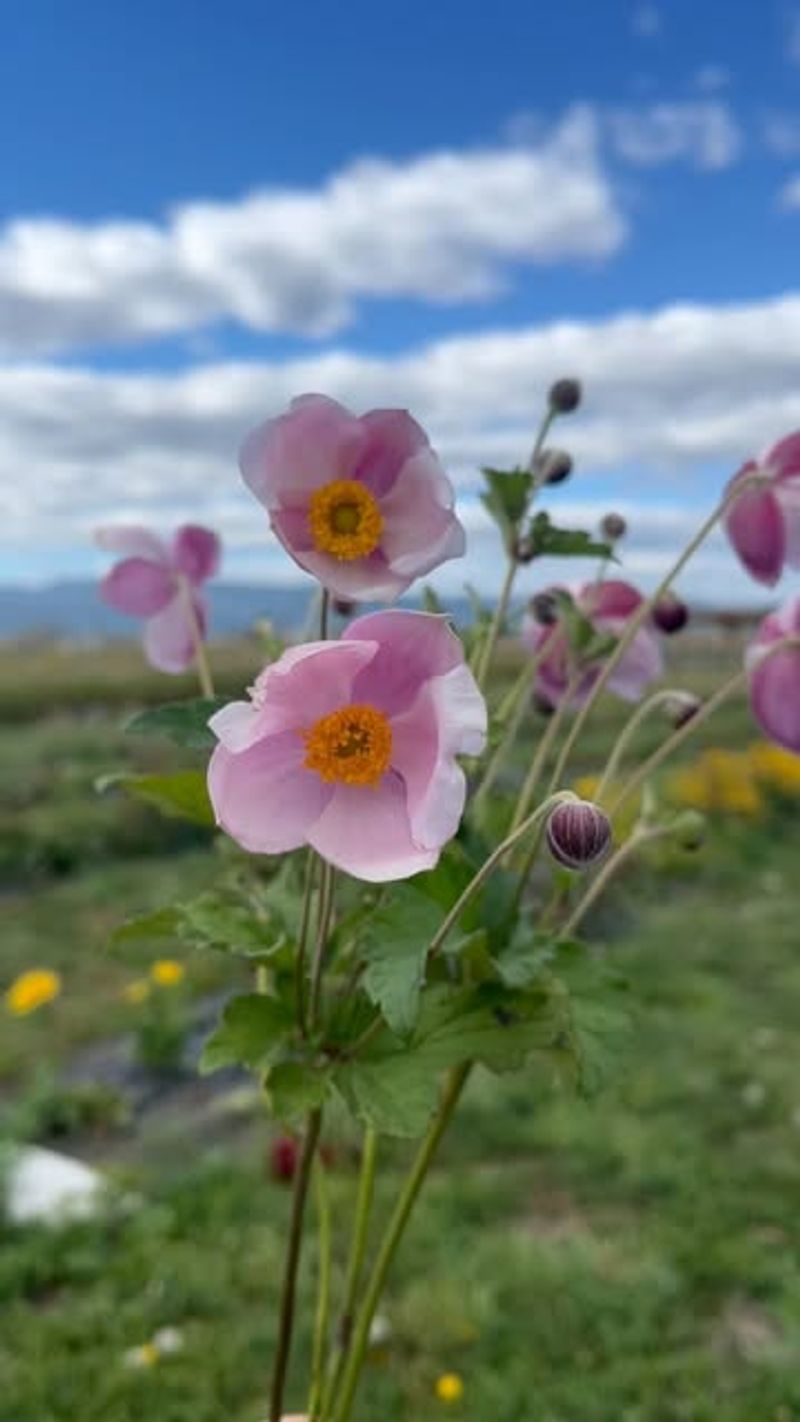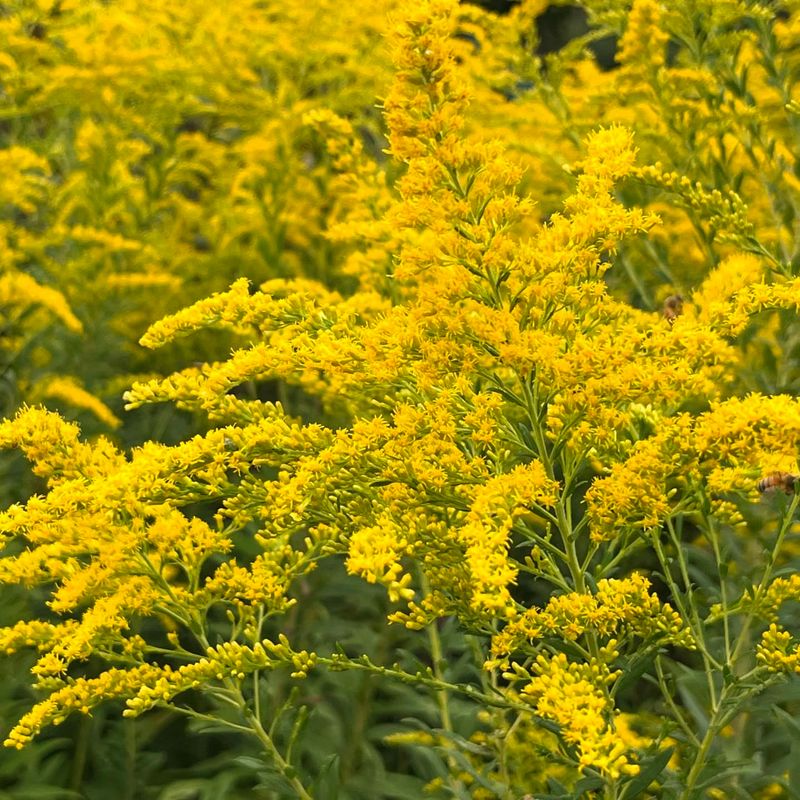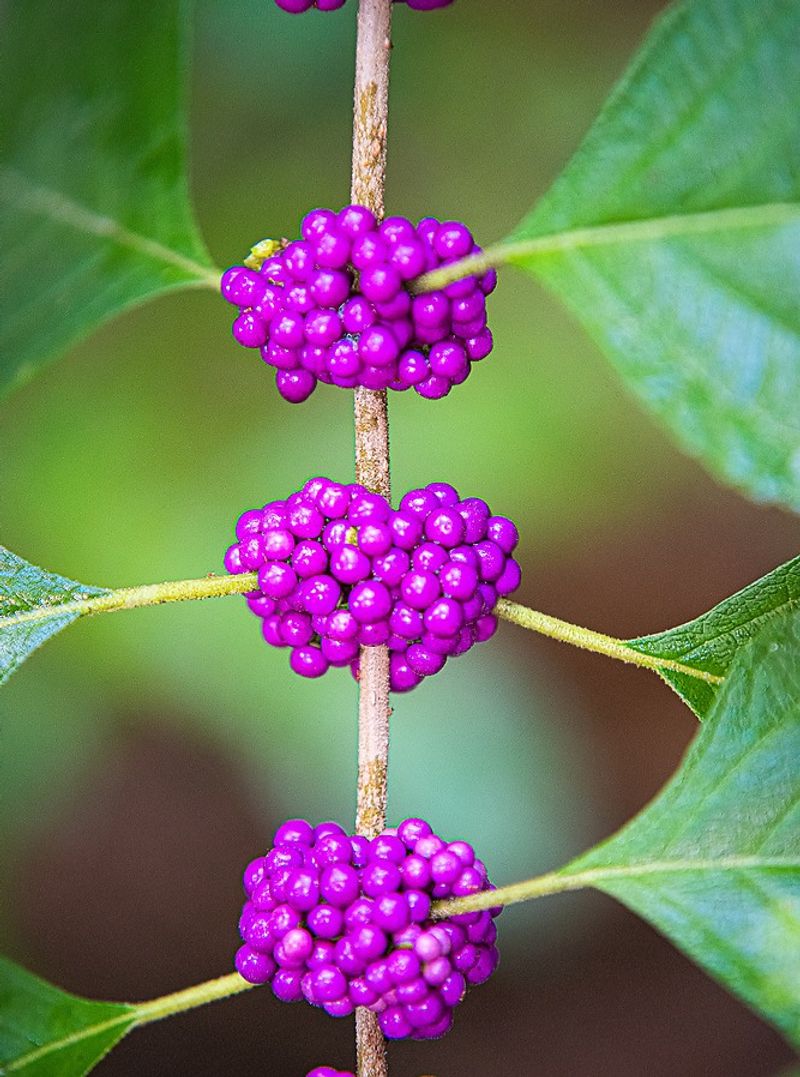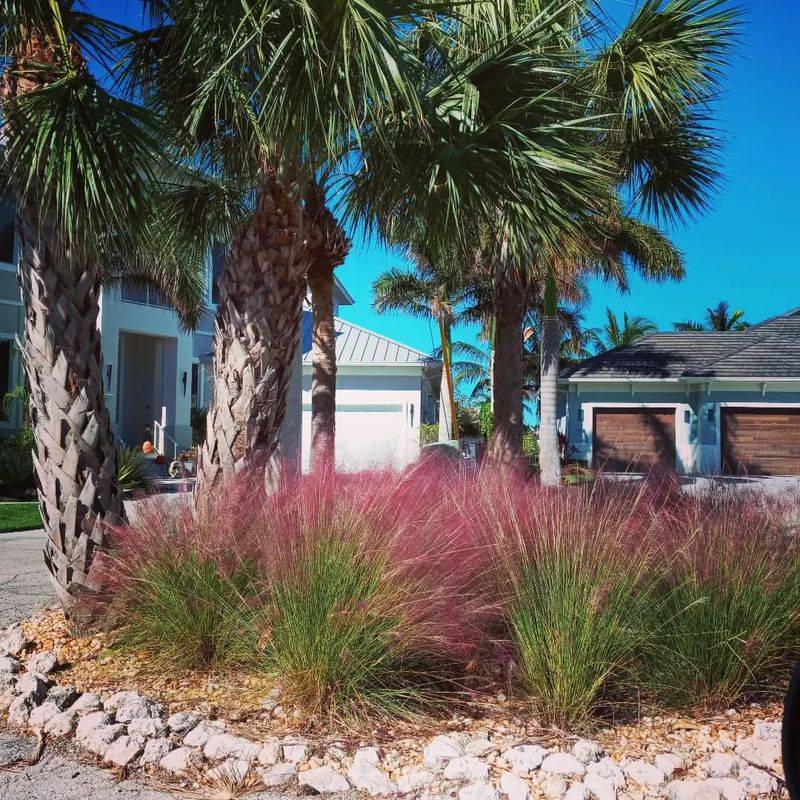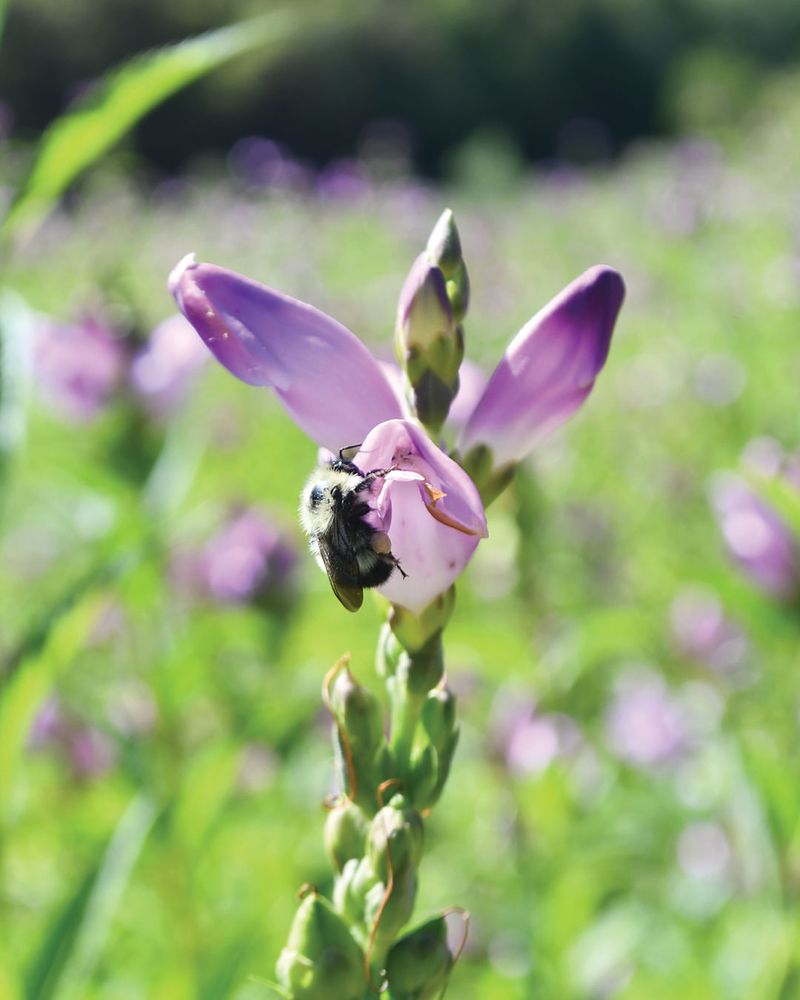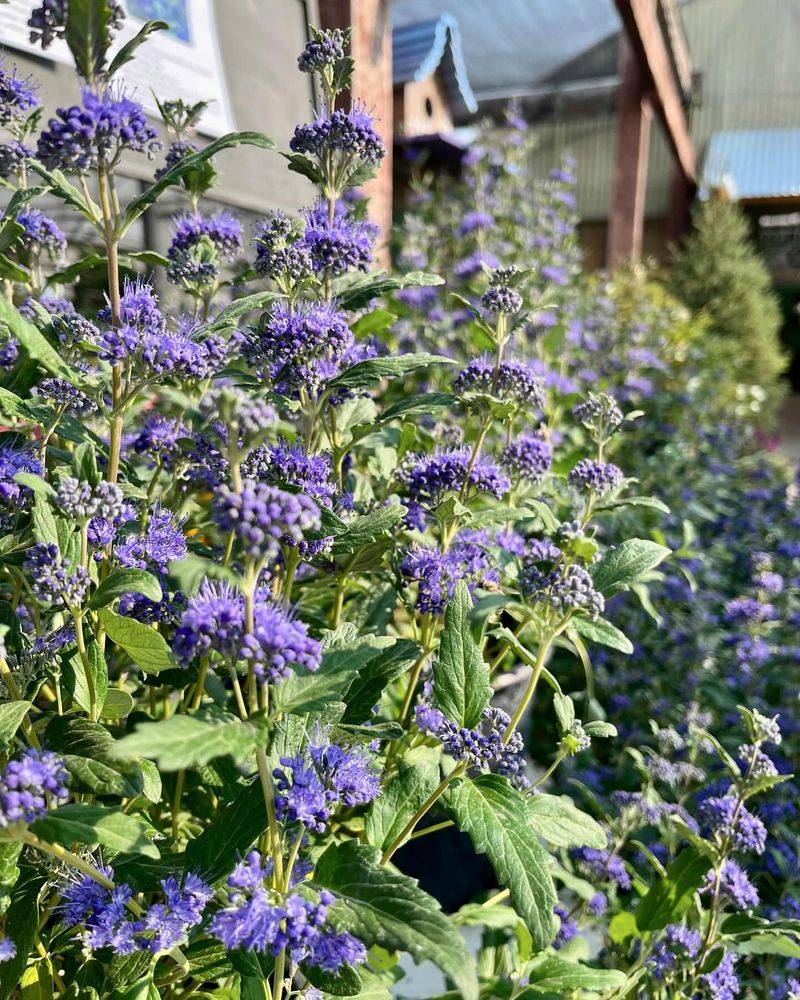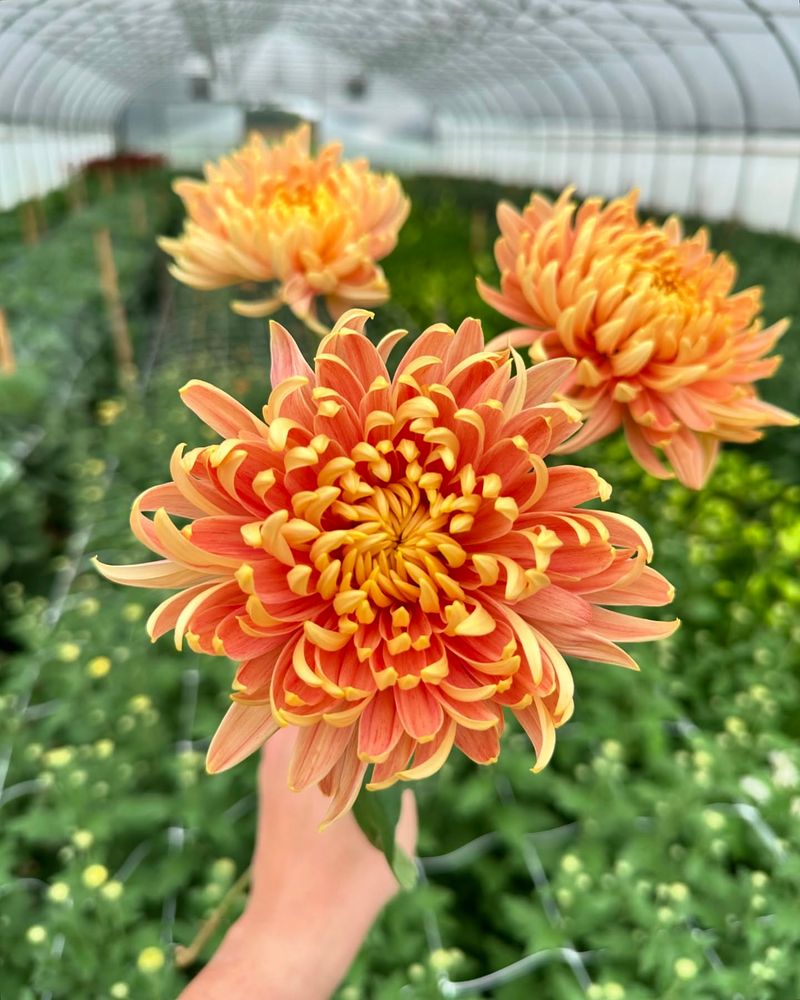When most garden blooms fade in North Carolina, certain resilient flowers continue to add color to your landscape. These late-season bloomers thrive when temperatures drop and days shorten, giving gardeners extended beauty beyond summer.
Whether you’re planning next year’s garden or looking to brighten your current one, these persistent flowers will keep your outdoor space lively when other plants have called it quits.
1. Autumn Joy Sedum
Star-shaped pink flowers transform to copper-red as fall progresses, creating a dramatic color show in your garden. Autumn Joy Sedum stands tall even when other perennials have wilted away.
Butterflies adore these sturdy blooms that appear from August through November. The thick, succulent leaves stay attractive all season, adding texture to your landscape even when not flowering.
2. Russian Sage
Lavender-blue spikes dance above silvery foliage, creating a dreamy purple haze in your landscape long after summer ends. Russian Sage thrives in North Carolina’s hot, dry conditions while continuing to flower when cooler weather arrives.
Drought-tolerant and deer-resistant, this perennial keeps going strong through October. The aromatic leaves add an extra sensory dimension to your garden experience.
3. Encore Azaleas
Unlike their spring-only cousins, these revolutionary azaleas produce colorful blooms multiple times throughout the growing season. Encore Azaleas offer a spectacular autumn performance when traditional azaleas have long finished their show.
Developed specifically for extended flowering, they come in various sizes and colors. Their ability to flower into November makes them perfect for maintaining garden interest during North Carolina’s mild fall months.
4. Toad Lily
Orchid-like spotted flowers appear along arching stems just when most shade gardens have lost their summer sparkle. Toad lilies bring exotic beauty to woodland gardens from September through October. Native to Asia, these unusual perennials thrive in North Carolina’s partially shaded spots.
The intricate purple-speckled blooms reward close inspection, making them perfect for garden paths where visitors can appreciate their delicate details.
5. Mexican Bush Sage
Velvety purple flower spikes emerge in abundance during late summer and continue their magnificent display well into fall. Mexican Bush Sage creates a dramatic statement when planted in groups, attracting hummingbirds and butterflies to your autumn garden. Fuzzy silver-green foliage provides attractive contrast to the vibrant blooms.
This sage variety performs exceptionally well in North Carolina’s climate, often flowering until the first hard frost.
6. Fall Asters
Daisy-like blooms carpet these native perennials in shades of purple, pink, and blue when autumn arrives. Fall asters burst into flower just as summer perennials fade, creating waves of color across North Carolina gardens from September through November.
Pollinators flock to these late-season nectar sources. The New England and aromatic aster varieties perform particularly well in the Carolina climate, providing crucial food for migrating monarch butterflies.
7. Sweet Autumn Clematis
Clouds of fragrant white star-shaped flowers blanket this vigorous vine in September, transforming fences and arbors into spectacular displays. Sweet Autumn Clematis fills the air with vanilla-almond scent that intensifies in the evening hours.
After flowering, the vine produces feathery seedheads that add winter interest. This clematis grows rapidly in North Carolina conditions, sometimes reaching 30 feet in a single season, making it perfect for covering large structures quickly.
8. Japanese Anemone
Graceful pink or white blooms sway on tall stems above attractive foliage from August through October. Japanese anemones bring elegant movement to the fall garden when planted where gentle breezes can make them dance.
The satin-like petals surround golden centers that attract late-season pollinators. These perennials gradually form impressive clumps in North Carolina gardens, performing best in locations with morning sun and afternoon shade.
9. Goldenrod
Brilliant yellow plumes light up the autumn landscape, creating a golden glow that persists through October. Native goldenrod varieties provide essential late-season pollen for beneficial insects preparing for winter.
Contrary to popular belief, goldenrod doesn’t cause hay fever! The compact garden varieties behave much better than their wild cousins. These tough native plants thrive in North Carolina’s varied soil conditions with minimal care.
10. Beautyberry
Stunning clusters of purple berries encircle the stems of this native shrub from September through November, creating dramatic color when flowers are scarce. While technically not a flower, beautyberry’s vivid fruit display outshines many blooms.
Small pale flowers in summer develop into these spectacular berries by fall. Birds adore the nutritious fruits, making beautyberry an excellent choice for North Carolina wildlife gardens while providing exceptional visual interest.
11. Muhly Grass
Cotton candy-like pink plumes emerge in September, creating an ethereal cloud effect that glows magnificently when backlit by the low autumn sun. Muhly grass transforms from an ordinary-looking plant to a spectacular garden feature almost overnight.
The airy flower heads persist well into winter, moving gracefully with every breeze. This native grass thrives in North Carolina’s coastal areas naturally but performs beautifully throughout the state in well-drained soil.
12. Turtlehead
Hooded pink flowers resembling tiny turtle heads appear on upright stems from August through October. Native to North Carolina’s stream banks, turtlehead brings unique charm to moist garden areas when many other perennials have finished blooming.
Hummingbirds and butterflies visit these unusual blooms for nectar. The glossy dark green foliage remains attractive throughout the growing season, making this plant valuable even when not in flower.
13. Joe-Pye Weed
Massive dome-shaped clusters of tiny pink-purple flowers top impressive 6-foot stalks from late summer into fall. Joe-Pye weed serves as a butterfly magnet, often covered with monarchs, swallowtails, and skippers fueling up for migration.
Native to North Carolina’s meadows and stream edges, this impressive perennial makes a bold statement. The vanilla-scented flowers and commanding height create dramatic backdrops for smaller fall bloomers in naturalistic gardens.
14. Caryopteris (Blue Mist Shrub)
Powdery blue flower clusters cover this compact shrub from August through October, creating a cool-toned focal point when many gardens shift to warm autumn colors. Caryopteris attracts countless bees and butterflies with its nectar-rich blooms.
Aromatic silvery-green foliage releases a pleasant scent when brushed against. This drought-tolerant shrub performs exceptionally well in North Carolina’s hot summers and continues flowering into fall with minimal care.
15. Chrysanthemums
Garden mums burst with colorful blooms in every shade from white to deep burgundy throughout fall. Unlike florist mums, hardy garden varieties return year after year in North Carolina gardens when planted by early September.
Different varieties bloom at different times, allowing for continuous color. For longest-lasting display, choose early, mid, and late-season varieties. Remove faded flowers to encourage more blooms and protect from early frosts for extended enjoyment.

